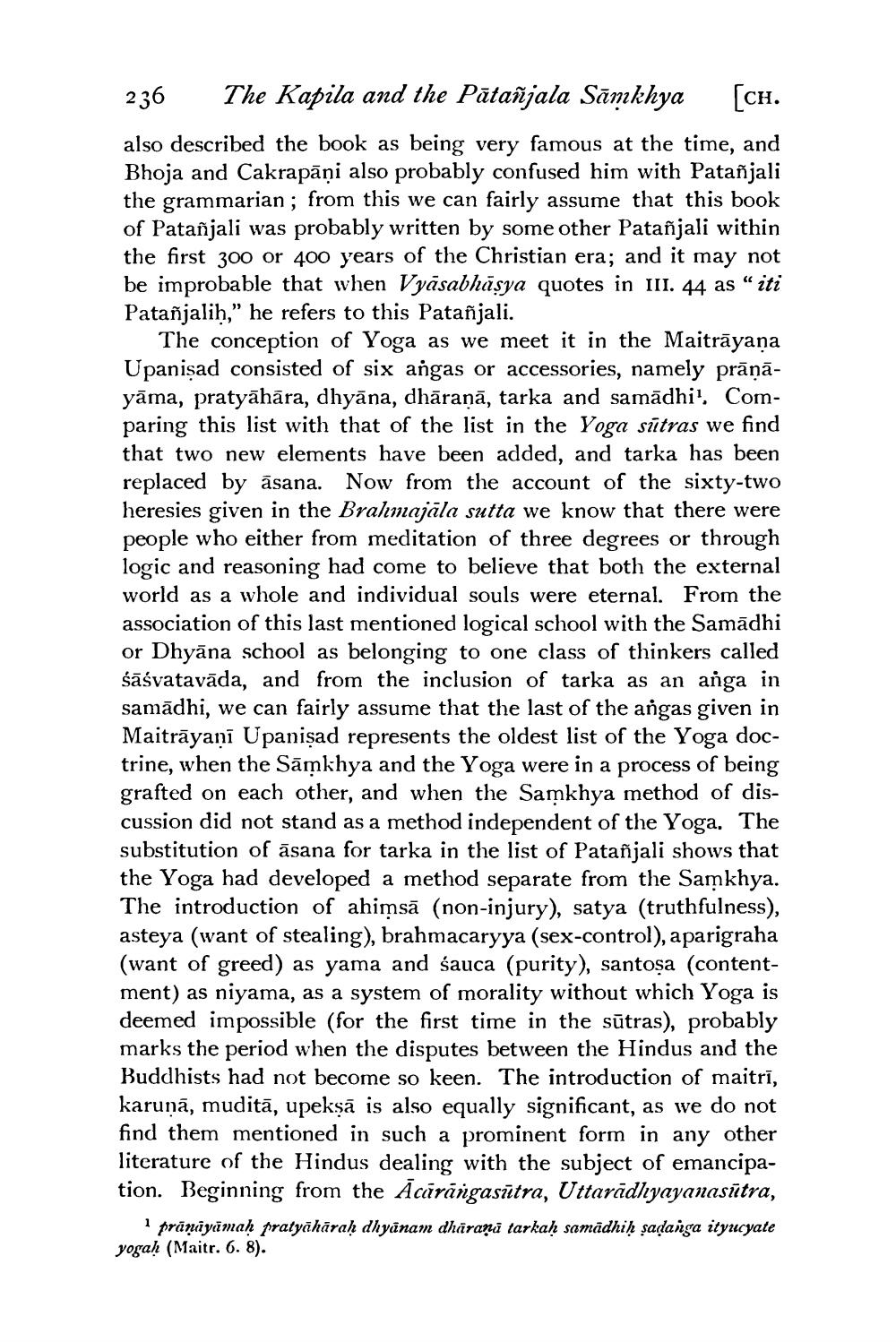________________
236 The Kapila and the Pātañjala Sāmkhya [CH. also described the book as being very famous at the time, and Bhoja and Cakrapāņi also probably confused him with Patañjali the grammarian; from this we can fairly assume that this book of Patañjali was probably written by some other Patañjali within the first 300 or 400 years of the Christian era; and it may not be improbable that when Vyasabhāsya quotes in 111. 44 as “iti Patañjalih," he refers to this Patañjali.
The conception of Yoga as we meet it in the Maitrāyana Upanişad consisted of six angas or accessories, namely prāņāyāma, pratyāhāra, dhyāna, dhāranā, tarka and samadhi'. Comparing this list with that of the list in the Yoga sūtras we find that two new elements have been added, and tarka has been replaced by āsana. Now from the account of the sixty-two heresies given in the Brahmajäla sutta we know that there were people who either from meditation of three degrees or through logic and reasoning had come to believe that both the external world as a whole and individual souls were eternal. From the association of this last mentioned logical school with the Samādhi or Dhyāna school as belonging to one class of thinkers called śāśvatavāda, and from the inclusion of tarka as an anga in samādhi, we can fairly assume that the last of the angas given in Maitrāyanī Upanisad represents the oldest list of the Yoga doctrine, when the Sāmkhya and the Yoga were in a process of being grafted on each other, and when the Samkhya method of discussion did not stand as a method independent of the Yoga. The substitution of āsana for tarka in the list of Patañjali shows that the Yoga had developed a method separate from the Samkhya. The introduction of ahimsā (non-injury), satya (truthfulness), asteya (want of stealing), brahmacaryya (sex-control), aparigraha (want of greed) as yama and sauca (purity), santosa (contentment) as niyama, as a system of morality without which Yoga is deemed impossible (for the first time in the sūtras), probably marks the period when the disputes between the Hindus and the Buddhists had not become so keen. The introduction of maitri, karunā, muditā, upekṣā is also equally significant, as we do not find them mentioned in such a prominent form in any other literature of the Hindus dealing with the subject of emancipation. Beginning from the Acārāngasūtra, Uttarādhyayanasūtra,
prānīyāmaḥ pratyāhāraḥ dhyānam dhārană tarkaḥ samādhiḥ sadanga ityucyate yogah (Maitr. 6. 8).




